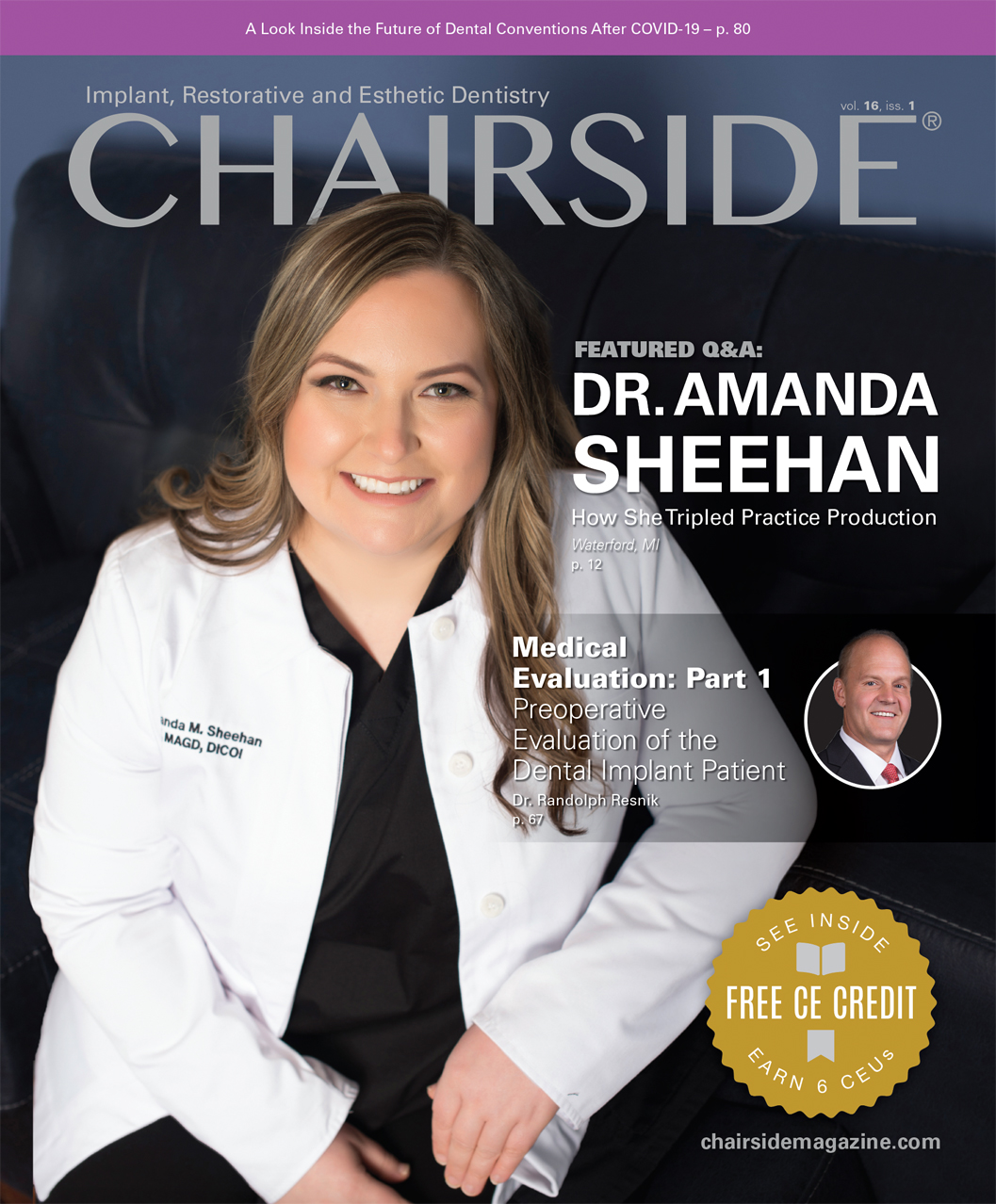BruxZir® Zirconia After 10 Years: Insights from Dr. Rella Christensen of TRAC Research
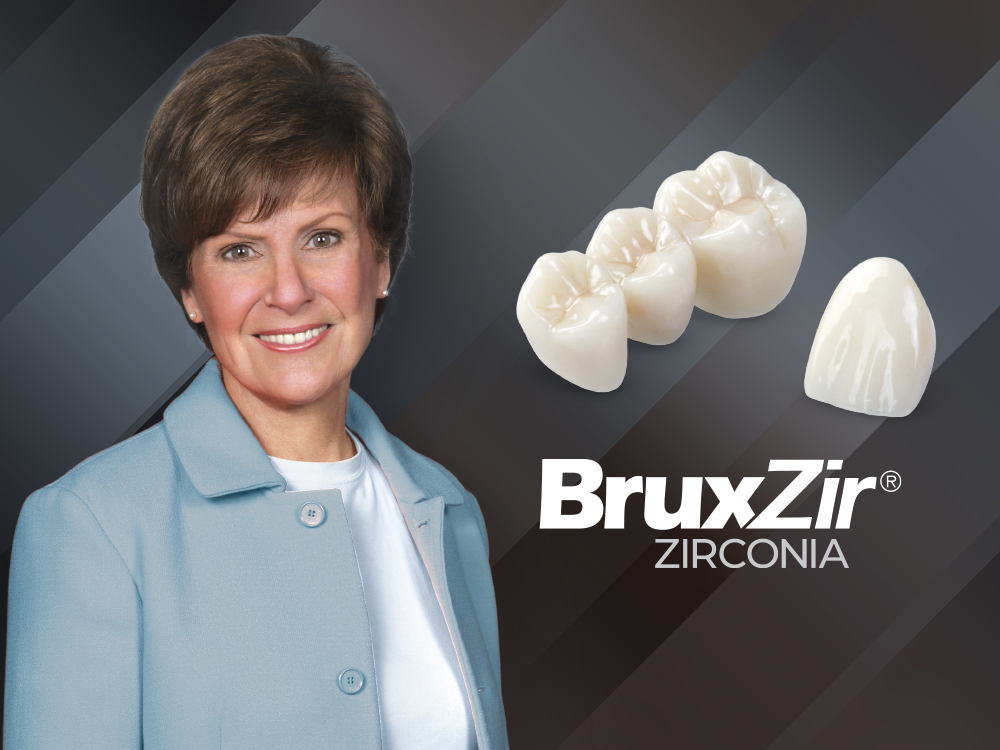
In September 2020, the independent Gordon J. Christensen Clinicians Report® published the annual update of their ongoing clinical study on monolithic restorative materials. Among the many ceramic materials currently under review by the TRAC Research section of Clinicians Report, the original BruxZir® Zirconia is recognized as the only material with a 100% survival rate and zero terminal fractures after more than 10 years of study.
To dive deeper into the results of this study, Dr. Neil Park, vice president of clinical affairs for Glidewell, recently interviewed Dr. Rella Christensen of TRAC Research on the newly launched “Chairside Live: Dental Insights” podcast. This article includes key takeaways from their discussion surrounding the clinical performance of BruxZir Zirconia, must-know zirconia terminology and how to boost lab results.
THE MONOLITHIC CROWN STUDY
For nearly two decades, Drs. Rella and Gordon Christensen have been looking to ceramic manufacturers to create something the Christensens call a “volks crown” (German for “people’s crown”), which Dr. Rella Christensen defines as a crown that would be available to anyone who needed one: students, single moms, and people who don’t have the resources for the esthetic ceramic crowns that were on the market back in the early 2000s.
Just after the release of the original BruxZir Zirconia in 2009, the dentist volunteers of TRAC Research began placing the newly released material. Today, over 100 dentists from all over the world are involved in the study, with more than 1,050 ceramic crowns placed from a wide range of brand names and zirconia formulations.
Once a crown becomes part of the the study, the dentist is asked to take careful vinyl polysiloxane impressions of the test crown and opposing dentition yearly during re-care appointments, to use a standardized evaluation form to grade 18 clinical parameters, and to make clinical images of the test crown and opposing dentition. The TRAC Research team uses the impressions to follow the status of the crowns using scanning electron microscopy over a period of years — measuring individual wear facets and identifying and monitoring all types of fractures on each crown.
From this data, they’ve been able to build a comprehensive, detailed picture of the long-term performance of modern monolithic restorative materials during clinical service in real patients. The ongoing results are published yearly in the Gordon J. Christensen Clinicians Report, providing everyday practitioners with sound clinical data on which they can base their decisions.
BRUXZIR CLINICAL PERFORMANCE
The original BruxZir Zirconia has demonstrated excellent durability during 10-plus years of study. Compared to the 15 other zirconia brands being followed by the organization, which represent various zirconia formulations from around the world, the original BruxZir Zirconia is the only material that’s had zero fractures and 100% survival over 10 years. Broadly stated, none of the zirconia brands under review have experienced terminal fractures. However, the non-BruxZir zirconia brands have been studied for significantly less time due to their coming to market several years after the original BruxZir. So far, the next-longest reviewed material currently has reached only five years of study.
Speaking on the original BruxZir Zirconia, Dr. Rella Christensen said: “In dentistry, you don’t find a material like the original BruxZir Zirconia, which has had no fractured crowns in the 10-plus-year period of study. We can’t say that about any of the other ceramic materials that are part of the study.”
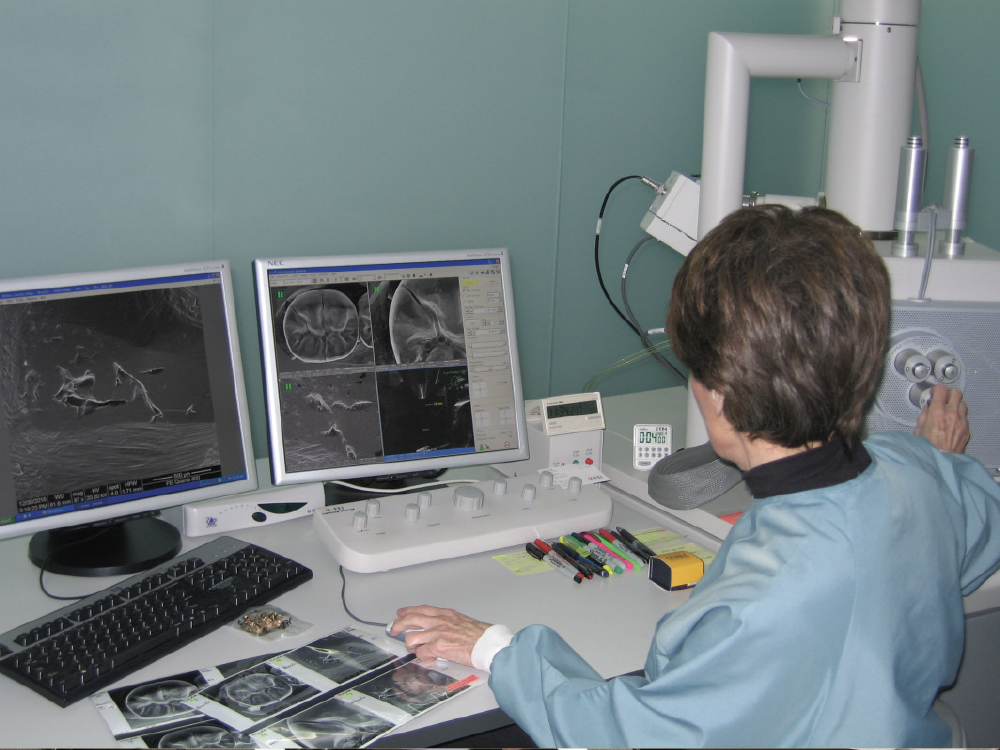
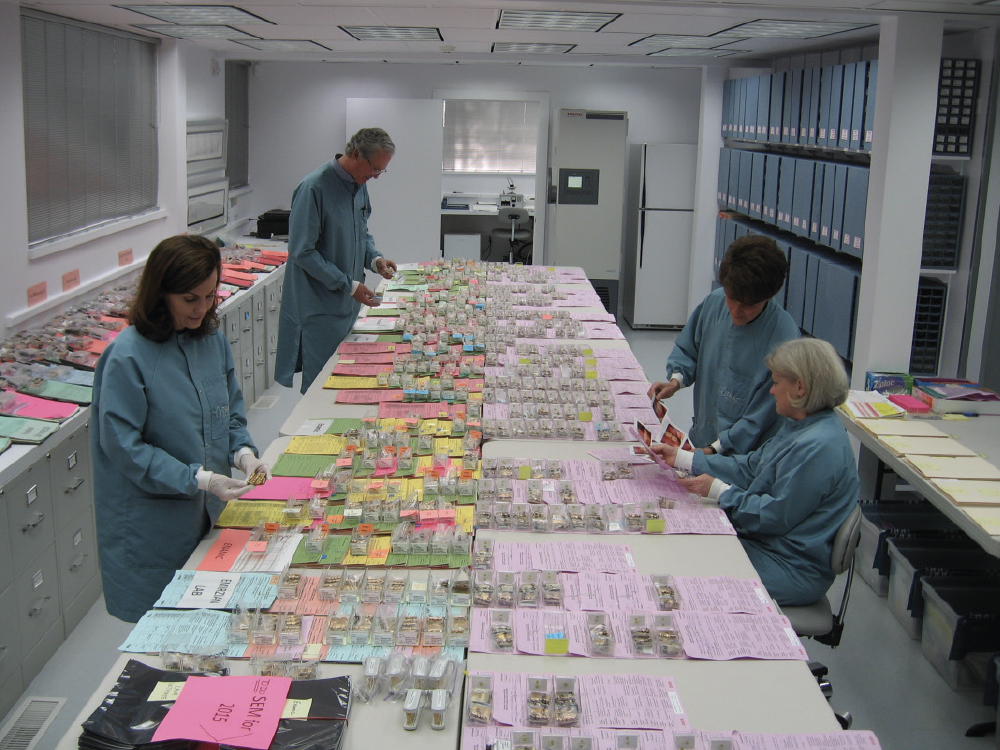
The TRAC Research team measures the evolution of wear facets, fractures and surface defects of every crown in their study on a yearly basis to build a comprehensive picture of each material’s performance.
Beyond durability, the study also measured the wear of the materials, both on the test crowns themselves and the opposing dentition. To do this, the scientists at TRAC Research measured the length and width of every wear facet on the surface of the test crowns and their opposing dentition with an electron microscope. The data shows that the original BruxZir Zirconia has been surprisingly wear-friendly. Opposing feldspathic ceramics and even enamel caused wear to BruxZir, while BruxZir itself caused very little wear to the variety of materials opposing the test crowns. The notable exception to this observation was cast gold, which the TRAC Research team found could experience significant wear from all brands of zirconia in the study. TRAC Research concluded that zirconia was contraindicated where opposing dentition was cast gold.
Dr. Rella Christensen’s team at TRAC Research was even able to observe the phenomenon of transformation toughening in action. In high-strength zirconia, a phase change can occur adjacent to and in front of propagating micro-cracks. This phase change causes a micro-expansion of the zirconia, ultimately stopping the crack from further expansion. After about three years of studying BruxZir Zirconia, her team began to note the process occurring in cases where the patient had zirconia opposing zirconia and a heavy occlusal habit. Dr. Christensen said: “You see this characteristic described in the literature, but it sounds like a fairy tale that when a crack forms the material expands slightly and actually stops the crack from propagating. We have actually recorded that phenomenon with SEM imaging every year now for 10-plus years on some clinical cases.” For non-zirconia ceramic and polymer-based materials, these same forces would ultimately lead to the failure of the restoration. In the same study, Dr. Christensen’s team observed that heavy occlusal abuse caused several lithium disilicate crowns to fracture in half.
Shortly after BruxZir Zirconia was introduced to the market, there were dire predictions about how such a strong material would damage the oral environment. Early skeptics promised that users of the material would see the loosening of adjacent and opposing teeth, degradation of the periodontal ligament, and worse. Commenting on these concerns after having observed BruxZir Zirconia for 10-plus years, Dr. Christensen said, “We followed this very, very carefully and none of these things ever transpired.”
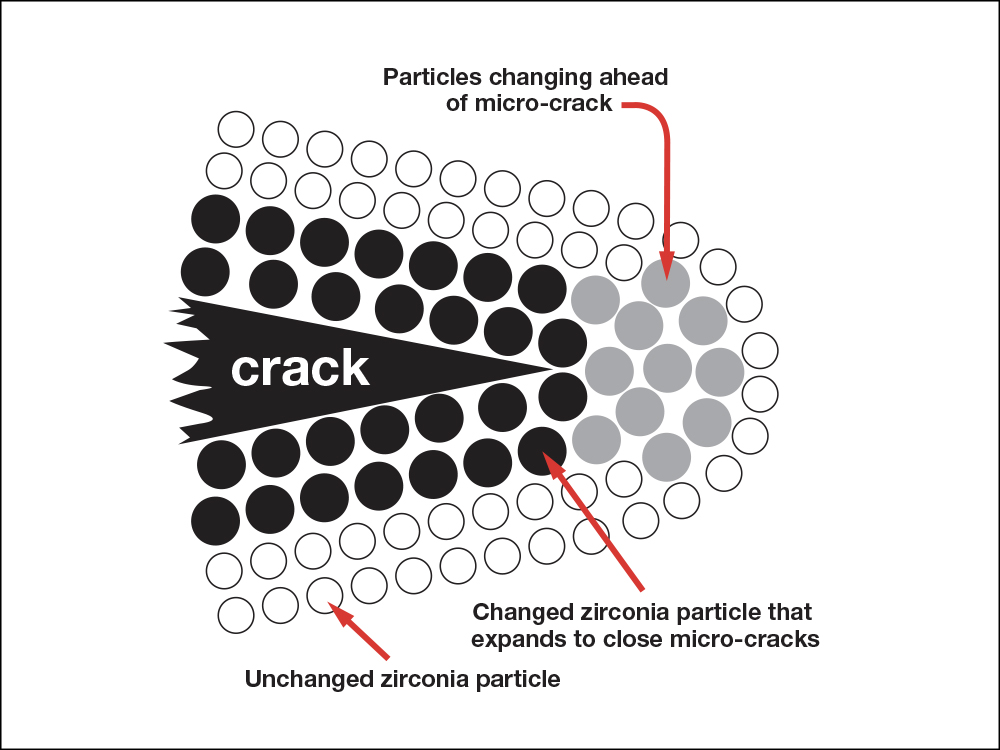
In the process of fracture toughening, which is found in the original BruxZir Zirconia, a phase change occurs in the zirconia particles that surround micro-cracks. As the phase of the particle changes, the zirconia particle expands and ultimately stops the propagation of the crack.
MUST-KNOW ZIRCONIA TERMINOLOGY
Given the widespread success of the original BruxZir Zirconia, manufacturers across the industry have been quick to release their own iterations of dental zirconia. While a handful of those materials are being reviewed by the TRAC Research team and have demonstrated suitability, a much more significant number of these zirconia brands entering the market today are coming from largely unknown sources. These off-brand materials are finding foothold by undercutting current product offerings in terms of price, but they come with some risks.
In her discussion with Dr. Park, Dr. Christensen expressed concern over these new materials due to their unknown content and quality. The TRAC Research team is aiming to include more materials in their ongoing study to help shed light on this problem, but ultimately dentists must educate themselves to ensure that the material being prescribed will provide the clinical service they intended for their patient. This means dentists must familiarize themselves with current terminology and the strength properties of the various formulations their labs offer. They should also know the brand name and source manufacturer of the zirconia proposed for use in the restorations intended for their patients.
Compounding this issue, much of the advertising used in dentistry lacks true clarity. Dentists must be aware that not all zirconias are created equally. In fact, there are actually two broad categories of zirconia: tetragonal and cubic-containing. Tetragonal zirconias are the original full-strength materials, which have the transformation toughening just described. Cubic-containing zirconias have an added amount of yttrium oxide to make the material more translucent. However, this added element can have a significant negative impact on the flexural strength and fracture toughness of the material, and result in the loss of transformation toughening.
The difference between these two types of zirconia is significant, with cubic-containing zirconias demonstrating significantly lower strength than tetragonal zirconias. Dr. Rella Christensen said: “At our lab, we tend to look at these materials as separated into posterior and anterior materials. We strain to recognize why on a first, second or third molar you would even consider a cubic-containing material.”
Each formulation has specific uses, a concept we at Glidewell have embraced wholeheartedly. In hopes of ensuring clarity for practicing dentists, we’ve renamed our zirconia offerings. We offer BruxZir Full-Strength, the original tetragonal zirconia that’s extremely durable and is backed by the 10-plus-year data. And, if you want esthetics, we offer BruxZir Esthetic, which is the cubic-containing zirconia with roughly 60% more yttria content and thus offers an enhanced appearance.
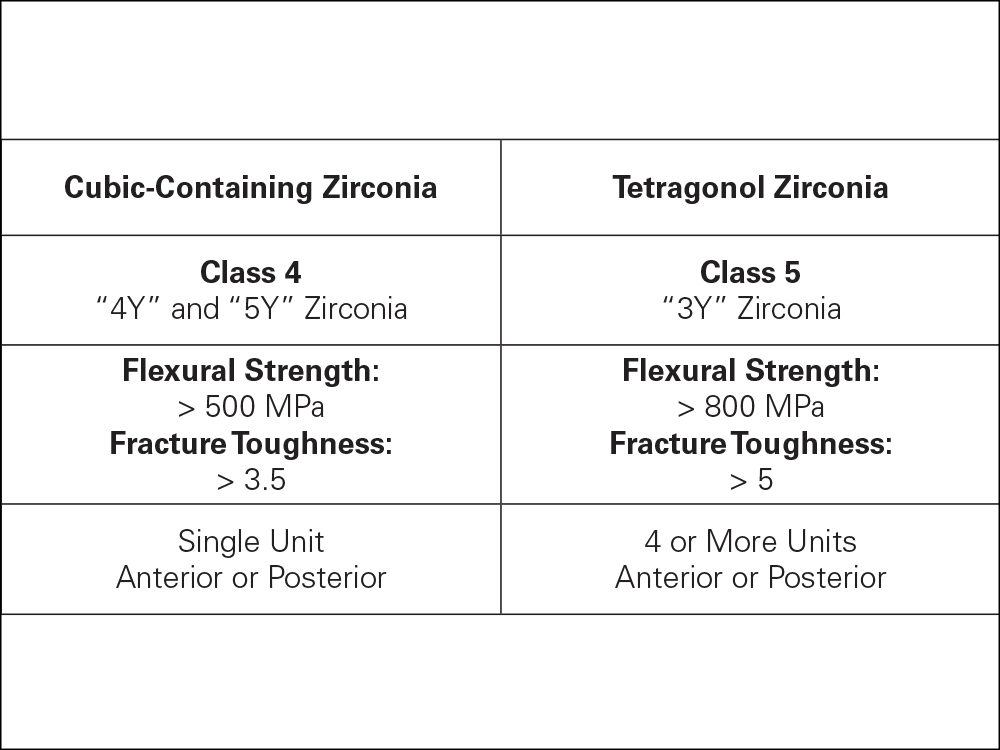
Clinicians should familiarize themselves with the differences between the zirconia classifications to make communicating with the lab easier.
BOOSTING LAB RESULTS
During the conversation, Dr. Christensen stressed, “Zirconia is not zirconia.” Which is to say, each brand differs in formulation, quality and strength. In addition, zirconia processed in one location may not perform the same as that processed at another location, even if it’s the same brand of zirconia. Selecting a proven material may be far more complex than what the advertisements would have you believe.
Further, a growing number of off-brand materials have entered the market with very little testing. These brands are not sold through companies like Ivoclar Vivadent, 3M or Glidewell. Rather, they’re sold directly to labs, which results in doctors being totally uninformed as to the names of these off-brand companies. In some of these off-brands, TRAC Research has found inclusions, debris and, most importantly, evidence of radioactivity.
Once the practitioner recognizes that not all zirconias are created equally, they can arm themselves with the knowledge and language to request the highest quality materials. Dr. Christensen recommends that dentists should pick a brand that has clinical data behind it and always specifically request it by brand name. Further, she recommends that practitioners develop a relationship with their laboratory and get used to one another’s work requirements.
BRUXZIR ZIRCONIA — THE ‘VOLKS CROWN’
The only zirconia brand available today with decade-long clinical research behind it, BruxZir Zirconia embodies the characteristics defined by the “volks crown.” Affordable and clinically proven, BruxZir crowns & bridges have been a leading contributor behind dentistry’s eager shift to monolithic esthetic restorations. The original BruxZir Full-Strength zirconia provides clinicians with the strength and toughness needed for common clinical abuses.
For essential terminology and full data, see Clinicians Report, “Zirconia Crowns: What dentists need to know in 2020!”, Vol. 13, Iss. 9, September 2020.
LISTEN NOW
For the full Dr. Rella Christensen podcast, visit glidewelldental.com/education/podcast

